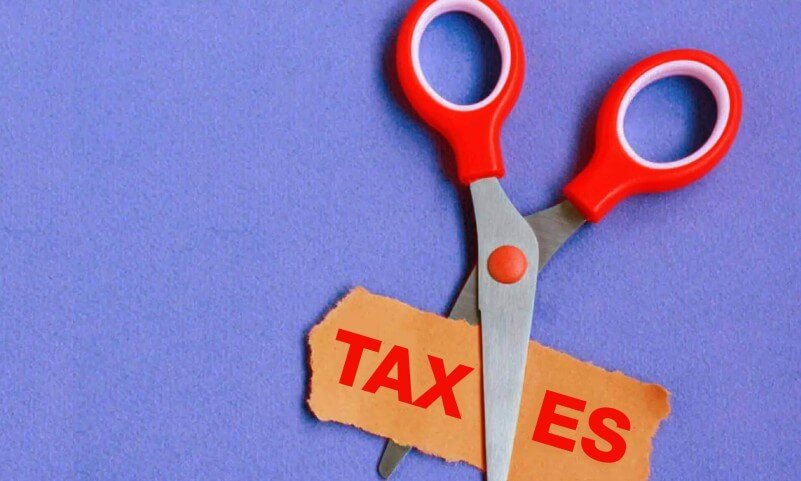Most of us tend to get quite nervous during tax season and understandably so. There are a number of things that we need to be aware of before we pay our taxes and file our returns. Plus, such procedures will seem complicated if we're not equipped with the necessary information. However, thanks to the internet, things have become a lot easier than before. We live in an age of information, where data is readily available online.
Let's say you're confused not just about how much tax you're liable to pay but also what kind of deductions you are eligible to claim. With the help of a few quick clicks, you will have all the information you need at your fingertips. In our attempt to equip you with all the information you need to pay your taxes and file for your returns correctly, here's a look at our investment declaration guide.
We all understand the importance of paying our taxes. Having said that, we also know that there are a number of legal means at our disposal that allow us to cut down the amount of taxes we are liable to pay. At the end of the day, every single penny counts, so if we can claim deductions, we could definitely go ahead and do that. Of course, if you don't make or declare your investments on time, you may not be able to enjoy all the tax benefits you are eligible to receive. In order to avoid high penalties, it's important that you are aware of how the Indian tax system functions. Now, let's discuss the pivotal role of investment declaration.
- At the start of every Financial Year, the Accounts Department of organizations solicit investment declarations from their employees.
- If this declaration is not provided, employers will have to deduct TDS from every employee's net income, which leaves barely any room for tax saving deductions.
- By sharing your investment declaration with your employer at the beginning of the year, your company's Accounts Department will be able to correctly calculate how much tax you owe and you're likely to receive a higher take-home salary every month. This is because the tax deducted at source (TDS) is calculated taking into account the investments you have already made or intend to make.
If you'd like to learn more about TDS and how it functions, you can refer to Section 192 of the Income Tax Act, 1961. It states that it's mandatory for employers to withhold taxes while paying salary to employees. The investment declaration mentioned here refers to the tax-saving investments that you want to make during the year. Here are some important points for you to remember:
- After receiving the declaration, your employer will take into consideration the proposed tax savings deductions from your salary before calculating the tax to be deducted at source.
- So, your total estimated salary for the full year would be reduced along with the estimated TDS.
- Under Section 80C of the Income Tax Act, you would find the most popular tax saving investments with an annual cap of Rs. 1.5 Lakhs.
- Deductions under Section 80D and Section 24 will also be covered under the declaration.
If your employer requests only the declaration, you're not required to submit any supplementary documents to validate the tax-saving investments at that point in time. Also, keep in mind that the declaration is not restricted to just investments and can be extended to other deductions such as loss from house property due to the interest repayment of a Home Loan. You would be required by your employer to submit supporting documents or proof of investments in the months of January or February of the given Financial Year.
The date of submission varies across different organisations, but typically you will have to submit your supporting documents latest by the 10th of March every year. Your employer will receive the documents, verify it and then deduct tax accordingly. The following are essential tax-saving investment proofs:
1. Investments made under Section 80C:
It includes investments such as Mutual Funds, Equity Linked Savings Schemes (ELSS), Life Insurance, Sukanya Samriddhi Scheme and Public Provident Fund (PPF).
2. Tuition Fees:
Submit photocopies of the school receipts that contain your child's institutions' seal along with the signature of the receiver.
3. First-time home-buyers:
Section 80EE provides tax benefits for first-time homebuyers whose loans were sanctioned in the given financial year.
4. Housing Loan repayment:
The certificate specifying the principal paid through the Financial Year has to be submitted.
5. Loss from self-occupied housing property- interest on Housing Loan:
The interest certificate that specifies the principal amount and break-up of interest has to be obtained from the Bank or Financial Institution.
6. Loss from rented out housing property– interest on Housing Loan:
The same certificate mentioned above will be required.
7. National Pension Scheme (NPS):
There is no need to submit proof of NPS investments if it's done under the Employee Model or Corporate Model. However, if you have made investments exceeding Rs. 50,000 on your own, you'll have to submit copies of your PRAN Card and NPS Transaction Statement for a Tier 1 Account.
8. Mediclaim Premium:
Request your insurer to send the statement for tax purpose under Section 80D.
With effect from 1st June 2016, a salaried employee is required to submit the Form 12BB to his or her employer to claim tax benefits or rebate on investments and expenses. Form 12BB has to be submitted generally at the end of the Financial Year. The form is a statement of claims made by an employee for requesting tax deductions. You may be wondering how to fill Form 12BB accurately. This can be easily done by viewing a Form 12BB sample filled.
Now that you're aware of how to fill Form 12BB, you can easily get your paperwork in order and submit it on time. Make the most of the opportunity and save as much money as you can.






